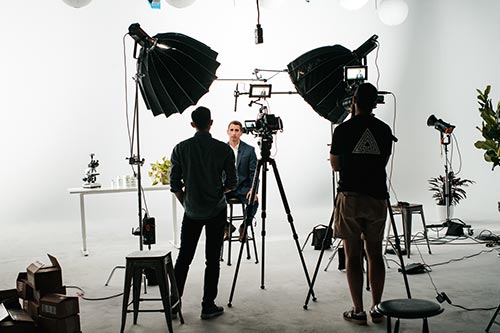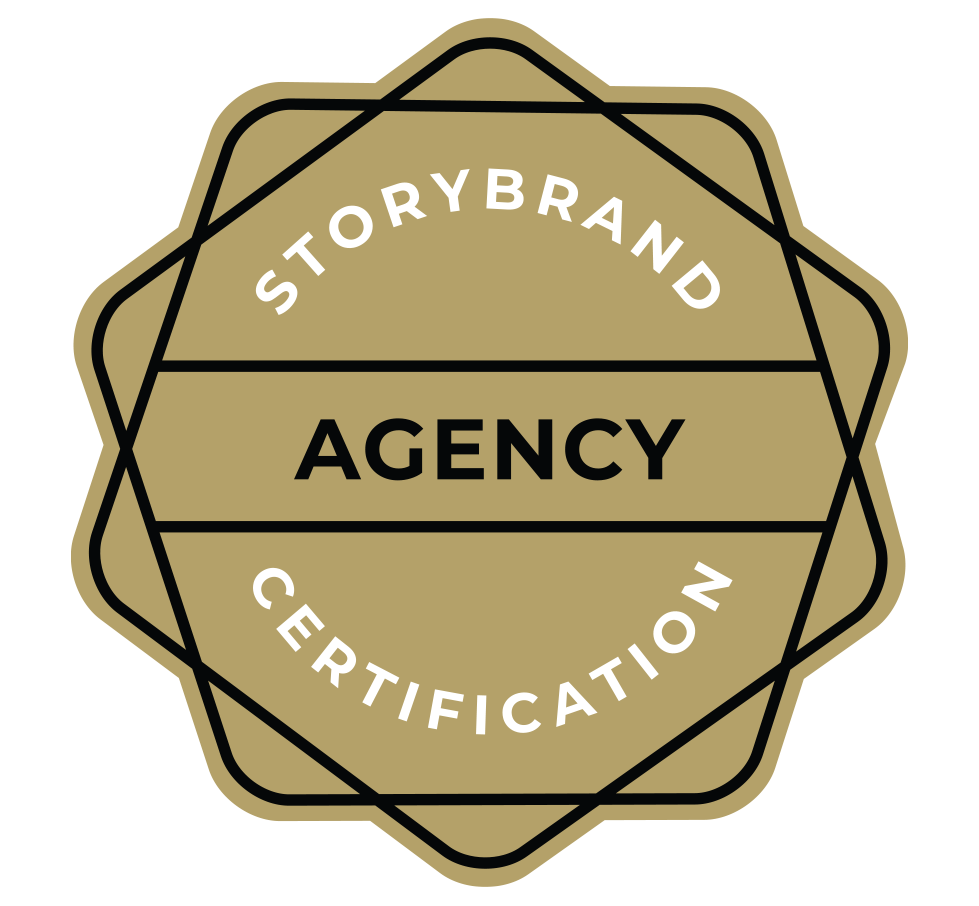
I’ll start with a bold claim: Your video is possibly the most important part of your StoryBrand website.
Whoa, hold up now. Surely you’ve already put many hours and dollars into your website design and messaging according to the guidelines of Donald Miller’s Building a StoryBrand book. So what gives me the audacity to say this?
Because no matter how pristine your messaging is in text form, your video will be the piece that lifts the digital veil and makes the human connection with your customer—the connection that really matters—and if your video is not a quality StoryBrand video, you could be hurting your chances at scoring the sale.
But what does a StoryBrand video look like for your business? How do you make one? Should you just read off your BrandScript and hope for the best? Do you need B-roll? Should you hire a professional videographer and editor?
Luckily for you, as Creative Director and video production specialist at Good Agency, I’ve been making StoryBrand videos for our clients for over four years now, and I’m here to share my top 7 tips on how to make a StoryBrand video for your business that wins.
1. Create a list of questions that pull out the Brandscript
The StoryBrand message of your company is the foundation of your video. To get that Brandscript onto video, you need to film an interview or two. Have someone interview you or a key member of your staff with questions that draw out the Brandscript.
(And yes, you are a better choice than a paid actor—your customer needs to make a personal connection with you.)
Remember, your Brandscript consists of:
- Character (with a want)
- Problem (external, internal, and philosophical)
- Guide (with empathy and authority)
- Plan
- Call to Action (just focus on the Direct CTA)
- Success
- Failure
The questions should be designed to pull out the Brandscript. For example, check out this short list of questions for a company that sells ski products.
- What do skiers hope for when they head out to the slopes? (Character, want)
- What sort of challenges stand in the way of their perfect trip? (External problem)
- How does this make them feel? (Internal problem)
- Why does XYZ Ski Supply care? (Philosophical problem, Guide empathy)
- What sets XYZ apart from your competitors? (Guide authority)
- How do you guide customers to their perfect ski trip? (Plan)
- What do you want your customer to do? (CTA)
- What will happen if your customer buys your products? (Success)
- What could happen if your customer does not buy your products? (Failure)
2. You can’t always rely on a teleprompter
Another great idea for your video is to have your key talent on screen recite the Brandscript directly. You can use a teleprompter for this, but even better is to memorize it. It’s typically very easy to tell when someone is reading off a page or a teleprompter, but an internalized script usually looks and sounds much more genuine.
You can even use a combination of the Brandscript and interview questions! That’s exactly what we did for this Financial Advisor client—see if you can guess where they jump between interview and Brandscript!
3. Plan your B-roll—especially for the Problem and Success
It will be tempting to spend your B-roll capture time just covering the Guide-–for example, getting too many shots of your office, your team, your building, your logo, or your awards. Remember the Guide is not the main character. The Hero (aka Character) is.
Your customer needs to see themselves in the story. But videographers usually forget to capture footage that visualizes the Hero’s Problem and Success. Plan those shots!
Quick tip: I’ve found that visualizing the external problem (e.g. mold in the attic) is more important than showing the internal problem (e.g. the homeowner’s face writhing in disgust), as that often gets cheesy quickly. 🙂
Most importantly, show Success! Internal feelings usually are good to show here—look how happy the kids are at 1:53!
4. Break the Brandscript and follow this foolproof outline
Here’s my secret sauce for StoryBrand videos—break the Brandscript outline and rearrange it to this. You’ll see results every time:
- Character & want (if not already implied) (5% of video)
- Problem (25% of video)
- Failure (10% of video)
- Guide (25% of video)
- Success (25% of video)
- Plan (5% of video)
- CTA (5% of video)
Want to see it in action?
5. The climax is the first mention of Success
In the editing room, pick a song that builds to a climax, and have the first mention of Success come down right at the drop into the climax of the song.
I did this in our own video for Good Agency:
6. The more expensive your product is, the more professional your video quality should be
Some companies and startups will be fine filming their video on their iPhone – in fact, it might even be preferable! But if your product is expensive or luxury-tier, you need to show that same level of quality in your video. You’ll want to film your video on professional cinema cameras and have a studio do the directing and editing. We can help here!
7. Go big or go home in Act 3
I like to break up my edits into three acts.
- Act 1 – Conflict (Character, Problem, Failure)
- Act 2 – Journey (Guide)
- Act 3 – Resolution (Success, Plan, CTA)
When the video transitions to Act 3, you should be talking about SUCCESS—which is supposed to be a joyous, cathartic, and thrilling experience for your customer!
How do you translate this into the film? Here are a few ideas:
Bonus: Do all your photography for the website on the same day as your videography
Bonus points! If you do all your website photography on the same day you film your video, this will unify your brand like nothing else.
This is what we did for Athens Micro in April 2023—notice how their photography on their site matches the video. This makes their brand appear unified and professional.
Conclusion
That was a lot of information, but that’s the masterclass in how to create a StoryBrand video for your business! Remember:
- Create a list of questions that will pull out the Brandscript
- Teleprompter presentations aren’t always reliable
- Plan your B-roll
- Break the Brandscript and follow the new outline I showed you
- The climax of your film is Success
- If your product is expensive, your video should be also
- Go big or go home in Act 3
- Bonus – do all your photography on the same day
That’s it! At Good Agency, we’re here to help. We’ve been doing this for years now and are one of the leading agencies for getting a StoryBrand film that will win for your company. Reach out today and schedule a call to get started!







